|
NOTE: This blog references the deaths of two very young children following their interaction with dogs. Some of the content may be disturbing to some readers. Look at the images below of children interacting with dogs. What do you see? Do you see a cuteness overload? These images make me cringe because I see potential danger in the body language of the dogs and the proximity of the children's faces to the dogs' mouths. Two local tragedies related to children does within a period of a week in my area have brought me back to the subject of our unequivocal responsibility to protect dog bite related fatalities. I have written on this subject many times before and believe we just cannot talk about this enough. On February 26, 2024, 4-year old Beau Clark went into a neighbors yard where he was critically injured by a dog. The boy's father tried to intervene and was injured himself. The dog was originally identified by the Morgan County, Alabama Sheriff's Office as a "pit bull." It was later identified as an Olde English Bulldog. The dog was euthanized. The Facebook page for the sheriff's office posted that no charges were filed after the Investigation revealed that:
On March 1, 2024, a 2-year old boy who has not yet been identified entered a fenced yard by opening a gate. He was critically injured by two dogs, a Siberian Husky and a Labrador/Golden Retriever mix, after he was bitten in the face. Details about his prior interaction with the dogs is not yet know. The owner of the dogs (who were taken from the scene by animal control authorities) said they were in their fenced yard, had no prior history of violent or aggressive behavior and had never been out of the yard. He was not home at the time of the incident. Members of the Madison County, Alabama, Sheriff's Office will conduct the investigation into the child's death. These two locations are less than an hour apart. These are compounded tragedies - for the children, for their families, for the owners of the dogs, for the dogs, for the law enforcement community and for the region as a whole. I feel terribly for everyone involved. Local news stations covering these stories have focused mostly on the topic of "aggressive dogs" and what adults can to to keep themselves safe. I saw a story this morning in which a dog trainer was explaining how to use dog repellent spray and how to get into a fetal position to protect your head. I have yet to see any coverage that addresses the issue of keeping children safe around dogs to prevent tragedies like these even though that should be the immediate focus. It is up to all of us to make sure children are safe around dogs - that includes family dogs with whom we share our homes and dogs who belong to others. I've shared information from the CDC and American Veterinary Medical Association about dog bite prevention before but it bears repeating.
The effects of deaths like this are far-reaching and touch even people who do not have children in their home. If you see interaction between a child and dog you feel is unsafe, please intervene before the situation gets out of hand. It is better to anger the dog owner or the adults responsible for the child than to risk serious injury or death. The National Canine Research Council tells us that dog bite related fatalities are extremely rare because they ordinarily are. Not this week in northern Alabama.
0 Comments
I was a good dog. I didn't know what that word meant when I first went to live with my people. I didn't know any of their words and they didn't understand mine. But they were patient and they taught me. I learned their words and they learned my body language I use to communicate. I learned words like sit and stay and come and inside and outside and cookie and ball and "do your business" and no, but I don't hear that word too much. I know I'm a good dog because they tell me all the time. Sometimes they say the word a lot like I'm a good good good dog and they look at me with bright eyes and soft faces and I know they love me. My people spend time with me. We play and run and they make funny noises and they touch me and I feel good. They brush my fur and my teeth and sometimes they kiss my ears. On some days they leave to go someplace and I either rest on my bed in the place where my people sleep or I rest in my room . I like my room because I can see around me and I feel safe there. I can always tell when my people are about to come back by their smell. It's strong when they leave and when it goes away to a certain point, I know that means they will be home soon. They take me out to do my business and to play and then maybe we will go an R-I-D-E. They think I don't know that word when they say it longer but I do. Sometimes we just rest and they watch a box on the wall that sometimes has animals and other dogs. I get excited when I hear dogs barking on the wall box. Sometimes I get special treats. Every day is a good day. Then my life changed. My people came home and a door was open and I saw what I was sure was their R-I-D-E so I ran after it as it went away. I heard my people calling for me but I was sure one of them was leaving again and it was a race so I ran and ran and ran. By the time I stopped I didn't know where I was. I thought I could use smells to find my way home but the sky got wet and I had trouble. A person who was not one of my people yelled at me and told me to go. I little person ran at me and threw things at me. I was so afraid. Later a group of other people surrounded me and tried to catch me but I didn't know them and I was afraid. I ran away and almost got hit by a ride. There was a really loud noise then and so I ran some more. I got so tired. I slept for a long time in some trees and then I smelled and heard a person walking toward me really slowly. He was talking sweet and calm but he was not my person and I could tell he was afraid so I was afraid of him. I lowered my head, tucked my tail and showed my teeth to tell him I was afraid. I let him put a hard thing that was on a long stick around my neck and let him put me in a box on a ride. I thought he might take me to my people. The box smelled like so many other dogs and then when it moved and I could not see, I was more afraid than ever in my life. The person took me to a building and walked me inside with the thing on a long stick around my neck and he put me in a small room. But it was not like my room with my people. It was cold and the floor was wet and I could only see through the front as people talked and walked by. It wasn't as bad as the box that moved on a ride, but I was still so scared. I could smell other dogs but I could not see them. Some barked again and again, people yelled and I had no idea what was happening to me. I tried to tell the people how afraid I was the only way I knew how but they didn't understand me like my people did. Time went by. When the people left each day, they were gone much longer than my people were ever gone. I was in my room so long so that could not hold my business and I felt bad about that. A person came and took me outside one day and I was so happy, because I thought my family had found me and I was leaving the building. I was outside for a little while which was a nice break and made me feel better because I could feel the sun and smell the grass and the trees and see the birds. I finally felt I could relax. Then he went to take me back inside and I was confused. Where were my people? Why did I have to go back into that place that made me afraid? I laid on the ground and tried to make myself as small as possible so the person would not see me, but he did. He dragged me back inside by a leash around my neck and put me back in the room that was wet again. Time went on like this and I got frustrated and sad. People walked by me and dogs barked and I felt so alone and confused. Why did I have to stay in this place? I was a good dog. I stayed in my little room so long that I kept making a mess. I just could not hold it any longer. One day a person came and took me to a different small room. There was a person in there who seemed excited to see me so I was excited to see her. She seemed happy and smiled at me and tried to get me to play with toys. I got closer to her to smell her to see if she smelled like my people. I was going to let her touch me. Before I knew it, she took my face into her hands and put her face right in front of my face. I was afraid she was going to hurt me so growled and I nipped at her to tell her I didn't like that. She yelled and people came into the small room and took me back to my little room. I could tell they were angry as they said no no no no over and over again and told me I was a bad dog. I was upset and more confused and afraid than ever so I laid there and tried to understand what was happening to me. I never felt so alone surrounded by so many people and dogs. After time had passed and the smells of the people were less, a new person came and took me out of the room that smelled like my business. I was happy at first. I thought he was taking me outside or that my family had finally found me. We walked down a hall to a new room and he put me on a table. I could tell he was angry and upset. He would not look at me and he told me he was sorry. I didn't understand that word. He moved some things around on a table and the next thing I knew I was very sleepy. I was a good dog. I shared a poster on my Paws4Change Facebook page last week that got a lot of attention. The message was simple. For reasons I don't know, the post has been shared more than 125,000 times. I see this as a good thing. My hope is that the message resonated with people and it made them think. As is the case with social media and the Internet, this also means the post attracted attention of people who did not agree with my message. I'm used to that and I usually see it as an opportunity to share my views and perhaps educate some people in some ways. I had numerous posts on my page to the effect that behavior euthanasia of shelter dogs is a good and necessary thing, that I was promoting having aggressive dogs adopted out into our communities who could endanger people, that I had no idea how hard people in shelters work and that not all dogs can be saved. These were not comments seeking discussion. I tried to reply to a few, only to have the commenters double down on how clueless, irresponsible and uniformed I am. About half were from people in other countries. I ultimately deleted the most hostile comments and banned the people who made them from my page. I just don't have the time to monitor that type of behavior and even if I did, there was no conversation to be had. These were comments by people who were advocating for the deaths of shelter dogs, most of whom assumed my poster related to aggression when it did not. Dogs are just as apt to be destroyed in animal shelters for failing to make eye contact, for "pancaking," for displays of barrier aggression (which is not actually aggression at all), for being uncooperative or for demonstrating fear-based behaviors which have nothing to do with aggression. I am fully aware that there are some dogs who are genuinely dangerous and cannot be allowed in our communities. As someone who works in the legal field, I've seen the results of dog bite related fatalities by genuinely dangerous dogs and will never be heard promoting the concept of "save them all." I am also fully aware that most dogs who enter shelters, whether they lived inside or outside, whether they were loved completely or simply tolerated, do poorly inside traditional animals shelters and behave in ways which have nothing to do with the behavior they normally display when they are outside the shelter building. I've shared this quote from the National Canine Research Council more times than I can count, but it is a truth we must consider related to every dog who enters an animal shelter. Shelter evaluations may tell us as much or more about the effect of the shelter as they do about the individual dogs. Shelters are noisy, alien environments, filled with strange smells, unfamiliar people, and dogs they may hear, but not see. We should not be surprised that some dogs may. . . behave differently when confined in a shelter, with its barrage of stressors that the dog cannot control, than they will in the safe, secure, predictable environment of a home, cared for by people with whom they are able to form positive attachments. Good dogs die in our tax funded animal shelters every day, across the country. I stand firm in my position that it is never appropriate to end the life of a healthy and treatable dog for behavior created by the conditions in which the dog is housed. For the vast majority of dogs who show fear-based and negative behaviors caused by the shelter environment, those behaviors can be prevented by getting the dog out of the shelter quickly to a rescue group or into a foster home. In those cases when rescue release or foster placement is not readily available, the dog should be treated as if he or she has a critical medical issue and should be cared for using an established protocol to give the dog every opportunity to leave the shelter alive. The least we can do for shelter dogs is to treat them as if they were, or could have been, someone's beloved companion. Because in most cases that's exactly what they were prior to their lives being ended for "behavior." Many dogs destroyed in shelters for "behavior" are very young. Their changing hormones affect how they respond to stress, they have a decreased ability to process information from their environment and they have less control over their behavior related to their frontal cortex (Behavior Vets). Before you presume that all dogs destroyed for "behavior" in shelters somehow deserved that fate, give some thought to how your own dog would behave in a shelter environment which is nothing like the home he or she has known. Do not assume that dogs destroyed for behavior actually did anything serious enough to end their lives. The dog who dies could be your own if you are unable to find your lost dog 1) because you don't know where to look; or 2) because the shelter which houses dogs for your area is open such limited hours that you ability to find your dog is impeded. You can learn more about this issue from the following publications: No Kill Advocacy Center: Animal Evaluation Matrix No Kill Advocacy Center: No Dog Left Behind Willful Ignorance is not Bliss No Dog Left Behind Leave No Dog or Cat Behind - Updated with Studies National Canine Research Council Research Library The story I shared above is fictional, but it is based on an actual dog named Riley. Riley was a young German Shepherd who was taken to a visitation room in a shelter to meet a potential adopter. The woman held Riley's face in both of her hands and leaned towards Riley who growled and then bit the woman in the nose. I presume the visit was unsupervised or the woman would not have been allowed to treat a dog she had just met in this manner. Riley was later destroyed for "behavior." This was a difficult blog to write. The lives of dogs like Riley must mean more than a line item on a monthly shelter report. Even though the story is fictional, there are many layers to consider which are not covered in this blog related to personal responsibility (ensuring lost pets can be identified, making contact with local animal control authorities and shelters when a pet goes missing) and the responsibility of places called shelters (return-to-owner protocols by animal control officers in the field, housing and enrichment programs for shelter dogs, introduction of dogs to potential adopters and fosters, and evaluation and rehabilitation of dogs who do poorly in a traditional shelter environment). The focus of this blog is not on what the family of the fictional dog could have or should have done. It is about a good dog whose life was ended needlessly not because this was a bad or dangerous dog but because she was failed by the shelter in which she was housed.
I got a text from one of my media contacts earlier this week, asking if I would comment on a story about a woman who had been attacked and killed by a pack of dogs near Red Bay, Alabama, which is in Franklin County (which borders Mississippi). He wanted to know how frequent these attacks are, what criminal sentence the owner of the dogs could receive and wanted to talk about how dog owners are responsible for preventing attacks. I had not heard about the incident and told him I would get back to him. What I learned was not only had there been a tragic death, but it was a compounded tragedy and one which was preventable. I learned the following, being mindful that many facts are still not known. On Thursday, April 28th, a woman was walking in a rural area early in the morning and was attacked by a pack of dogs. Someone heard her screams, intervened and was able to chase the dogs away. The woman was air-lifted to a hospital in Mississippi. The attack was reported to the Alabama Department of Public Health which investigates dog attacks as part of a dangerous dog law called “Emily’s Law” that was enacted in 2018 following the fatality attack of Emily Colvin in Jackson County, Alabama. On Friday, an employee from the Alabama Department of Public Health went to investigate the attack and was attacked and killed. It is not known why she went to the location in person or if she requested assistance from law enforcement authorities, which seems unlikely. Her body was found in her car after deputies went to investigate a report of a suspicious vehicle in the area. They were also attacked by the same group of dogs, receiving only minor injuries. Media reports indicate the dogs were “euthanized” on the spot. This most likely means they were shot. The woman involved in the original attack remains hospitalized in Mississippi and is undergoing a series of surgeries. The reported owner of the dogs was arrested for manslaughter which is a Class C felony in Alabama. She will also be subject to the criminal provisions of Emily’s Law which include both felony and misdemeanor provisions. She could potentially face many years in prison if convicted and may be subject to civil suits. I would not be surprised to learn she did not actually own the dogs involved in the attack and was just feeding them to try to help them. I did an interview with the reporter and shared with him the same information I’m sharing in this blog. The first and most important point I shared was that attacks like this are preventable. I understand that dogs who are family pets get loose for a host of reasons not all of which relate to someone’s irresponsibility. Children open doors, contractors leave gates open, dogs jump fences or dig under fences to escape. There are also dogs who are classified as “resident dogs” who are the dogs most often involved in that is commonly referred to as DBRF - Dog Bite Related Fatalitiy. Extensive research has been done on DBFRs by Karen Delise of the National Canine Research Council and by the American Veterinary Medical Association. The Journal of the American Veterinary Medical Association published the most comprehensive multifactorial study of dog bite-related fatalities in December of 2013. The study was based on investigative techniques not used in previous studies (which were first done in the 1970s). The study showed a significant relationship between these fatalities and a number of “potentially preventable factors." (A follow-up report combined the findings from the 2000-2009 study with information from 2010-2015). This study showed the following controllable factors were identified:
The study also showed that the breed of the dogs or dogs could not be determined in more than 80% of the cases. What was reported by the media and what was contained in animal control reports were inconsistent, casting doubt on the reliability of the breed of the dog reported by the media. The breed of the dog could only be confirmed in just over 18% of the cases. (inforgraphic courtesy of the National Canine Research Council) The second thing I shared with the reporter was that attacks like this are very, very rare. There were 46 dog bite related fatalities in 2020 in a country of more than 300 million people and a canine population estimated to be between 75 and 90 million dogs. There were 47 fatalities in 2019 and 38 in 2018. Although these incidents are exceedingly rare, it is logical to presume they are more apt to occur in places where the preventable factors are prevalent, such as in parts of Alabama where dogs are primarily resident dogs, not family pets, and where those dogs are allowed to run loose and are not sterilized. I live in the county where a woman was killed by a dog in 2017. Emily Colvin (the woman after whom the dangerous dog law was named) also died in 2017, approximately 30 miles from the fatality in my county. I see dogs running loose almost every day sometimes in small packs. I have written before about this wild west culture of allowing dogs to roam and some of the consequences for the dogs. Not every dog we see running loose in Alabama is a tragedy waiting to happen in terms of attacking and killing someone. But unless and until the people of Alabama and other rural areas of the country start taking responsibility for their dogs related to the controllable factors which contribute to attacks, people will continue to die needlessly.
There are also issues related to the responsibility of elected officials and law enforcement authorities related to this particular attack. Alabama has a law about dogs running at large, but it has to be adopted by each county and then enforced. Franklin County has never adopted the law. There is also a state law that counties and municipalities with more than 5 thousand residents must operate a "pound" (related to enforcement of the rabies law) or pay a pro rata share toward operation of a pound. I'm aware of no such facility in Franklin County and it is not entirely clear if the county has an animal control officer. Is it possible that people reported this pack of roaming dogs and nothing was done about it. It is also possible that people did not report the dogs because they felt doing so would serve no purpose, they didn't know who to call or they didn't see anything wrong with dogs running loose. My hope is that the tragedy of this case will cause the county to adopt the state law about dogs running at large and develop some method to enforce the law to deal with dogs running loose and to also help prevent this type of attack from happening again. As has been stated by the National Canine Research Council, “all dog owners have an unequivocal responsibility for humane care, custody and control: providing a license and permanent identification; spaying or neutering their dogs; providing training, socialization, proper diet, and medical care; and not allowing a pet to become a threat or a nuisance.” Or a weapon. And all municipalities have a responsibility to keep people safe. *The phrase "unequivocal responsibility" is from a publication of the National Canine Research Council. Dog Bite Prevention Week - We all Need to Educate Ourselves (Including the White House Staff)4/14/2021 Like a lot of other people who deal with animal welfare and animal shelter advocacy, I was thrilled to learn that the Biden family would bring a rescued dog to 1600 Pennsylvania Avenue. Major Biden was adopted from the Delaware Humane Association following the Bidens having fostered him as a puppy who came from a litter of dogs who were sick. That was three years ago. Major is now a stunning dog and pal to Champ, the Biden’s older dog they have had since 2008. Also like a lot of other people who run in my circles, I was not particularly surprised when I heard there had been a couple of “biting incidents” with Major and members of the White House staff. I feel confident both the Biden’s dogs have been around a lot of people during the course of their lives. The change in location and the sheer volume of new people in new situations would be a lot for any dog to handle and sets the stage for some degree of conflict and adjustment. I can’t imagine how my own dogs would behave if they were thrust into a new environment, surrounded by dozens of people they had never met before (some of whom may know little about dogs) and subjected to almost constant stimulation. We learned yesterday that Major will undergo some additional training to help him adjust to life in the White House. A contact of mine posted a question on her social media account a couple of weeks back, asking what the Bidens should do. I suggested they should do what all families with dogs should do – learn about dog bite prevention and educate those around them about dog bite prevention. I went on to opine that this week – which is Dog Bite Prevention Week – would be a prefect opportunity to do that. Training Major is a wonderful idea that likely should have been considered sooner. Training the people who interact with him is equally important in my book if not more important. We have so many dogs in our country, that most of us presume people understand dog behavior and body language. That’s just not true. As renowned researcher Karen Delise wrote many years ago in The Pit Pull Placebo: The Media, Myths and Politics of Canine Aggression, all dogs have teeth. All dogs bite. “They bite other animals, they bite each other and they bite humans.” More than half of American households includes at least one dog. This means millions of people are in daily contact with dogs, even if we include only the members of the dogs' own households. But how many people have really educated themselves on dog body language and how to remain safe around dogs? Not nearly enough. Dogs are surrendered to shelters every day for some type of bite incident, many of whom are destroyed. We hear that the incidents were “unprovoked” or “came out of nowhere.” While there are certainly times when that is true because the dog has some cognitive issue, most of these incidents were both foreseeable and preventable. The groups of people most commonly involved in dog bite incidents are children and the elderly. How many any times have you seen a picture of a child with their arms wrapped tightly around the neck of a dog or even laying on top of a dog? Some people find these images cute; I see them as disasters waiting to happen. Dogs bite for a variety of reasons. As the American Veterinary Medical Association states on its website, a dog bite is most commonly a reaction to something. “If the dog finds itself in a stressful situation, it may bite to defend itself or its territory. Dogs can bite because they are scared or have been startled. They can bite because they feel threatened. They can bite to protect something that is valuable to them, like their puppies, their food or a toy.” Dogs also bite when they don’t feel well and they just want to be left alone. Dogs also bite during play, something most of us have experienced. During Dog Bite Prevention Week, please take time to educate yourself and your family about how to prevent dog bites. If you having issues with your own dog, please don't hesitate to get help; the issue will not go away with time and will only get worse. Consult with your veterinarian to see if there is some medical reason for your dog's behavior. Also consult with a trainer or behaviorist to resolve your issues. People don't like to hear it, but there are many times when the issue is not with the dog but with the people who care for the dog. The training may need to be more for you than it is for your canine companion. If you have an issue with your dog in your home and take your dog to a shelter, the odds are against your dog being adopted. Do all you can to resolve your issues in your own home so lack of action does not lead to the death of your dog. There is a lot of great information on the internet on this subject so I won't restate it here. The sites I think have the best information are the following: American Veterinary Medical Association: Dog Bite Prevention ASPCA: Dog Bite Prevention The Spruce Pets: How to Stop Your Dog From Biting Positively Victoria Stillwell: Dog Bite Prevention If you’re up for something more in-depth, I encourage you to look into the materials on the website for the National Canine Research Council. I relied heavily on materials from the NCRC when I wrote my research paper about adoption of pit bull-type dogs years ago and was thankful Karen Delise reviewed it for me. The Family Dog also has some great videos on their Youtube channel about children and dogs. One of my favorites is “I Speak Doggie.” Back to the Biden family, I hope steps will be taken not just to “train” Major Biden, but to educate the people around him who will interact with him. I am sure Major was trying to communicate with the people around him when the incidents happened. We all need to know how dogs communicate to keep all of us safe.
 I’ve always had a soft spot for abused and neglected animals. I see us as stewards of the companion animals we domesticated and for me, there is just no excuse for treating them poorly. When it comes to owned animals, my position is that if you don’t really care about that animal and are not prepared to treat him or her as a member of your family or a valued partner in some way, you should not have animals at all. In doing so, I make no distinction based on income. I am aware of homeless people who take better care of their pets than do some celebrities who treat animals like furry accessories or as some status symbol, only to discard them when caring for them calls for too much responsibility. The topic of chained dogs is one I’m particularly passionate about. It all goes back to our dog, Snake, for me. She had been living chained to a tree with a heavy logging chain in Northern California when Rich rescued her years ago with the help of a game warden. She was not socialized to people and we will never know how she was treated in her developmental months as a young dog. She had no fur on her neck due to the chain and she “pancaked” in the early days when Rich took her home. She was simply terrified. The veterinarian Rich took her to said her hair may never grow back. It did and she thrived in time with the help of the man who is my own personal dog whisperer and who, in all likelihood, is really part dog. Every time I see a dog on a chain or a tether, forced to live outside 24/7/365 with no meaningful human contact, I ask myself one simple question: why? Why even have a dog if that animal is essentially imprisoned to a patch of dirt? It makes absolutely no sense to me and it is considered inhumane by every reputable animal welfare organization in our country. Dogs who are forced to live outside and confined to a limited space are not protective of the people who live inside a home near them. They become protective of the space in which they are forced to live. They do not make good living security systems who will bark when an intruder comes near. They are apt to either bark at everyone and every other animal or they do not bark at all. Dogs who live this way are considered “resident dogs” by subject matter experts like Karen Delise of the National Canine Research Council. They may not be aggressive towards the people who own them, but they can be incredibly dangerous to other people, with children and the elderly being most at risk of being bitten or fatally attacked. February is Unchain a Dog Month. The second week in February is Have a Heart for Chained Dogs Week. In honor of this week and month, I am happy to report that a dog ordinance I have been advancing in the city where I live was approved by my city council last night. It is now illegal to keep a dog confined by direct-point chaining or tethering to a stationary object in our city. Dogs may be contained inside a residential structure, inside a fenced yard, in a pen or with a run or trolley line. In addition to containment methods, our ordinance has provisions for adequate shelter and nutrition and prohibits dogs being kept outside during dangerous conditions. This particular part of the ordinance is intentionally vague so it can relate to either extreme temperatures or weather events like tornado warnings. I would have liked to have the ordinance prohibit perpetual penning of dogs, but we could not find a way to include a provision like that and have it enforceable at this point. A lot of people presume I advanced the ordinance due to my love for dogs and while that is absolutely true to a degree, it is not the whole story. I work in the legal field and one of the most gruesome cases I ever dealt with was in 2014 when we defended a dog bite fatality case. WWII Veteran Donald Thomas went to check his mail in September of 2012 and was attacked and killed by two dogs who belonged to neighbors. His wife came home from the store to find the dogs attacking her husband. She was unable to get the dogs to stop and called the police. An officer arrived within minutes and shot both dogs. It was too late. Mr. Thomas was dead. It was later discovered that the people who owned the dogs had 33 other dogs chained in their backyard. They were convicted of manslaughter and criminally negligent homicide. Mrs. Thomas later sued the city for wrongful death. So yes, this issue is about animal welfare. But it is even more about public safety and about ensuring dogs are cared for in ways which keeps them from being weaponized. If you keep your dog chained or tethered in your yard, please. Find another way to make that dog part of your family and keep him or her from becoming a public safety risk. If you are an animal advocate like me and you want to advance legislation in your own area to help keep your community safe and ensure dogs receive better care, have no fear. Take a chance and speak out for what you believe in. Dogs cannot speak for themselves and in the end, you are their voice. (image courtesy of Dana Kay Mattox Deutsch)
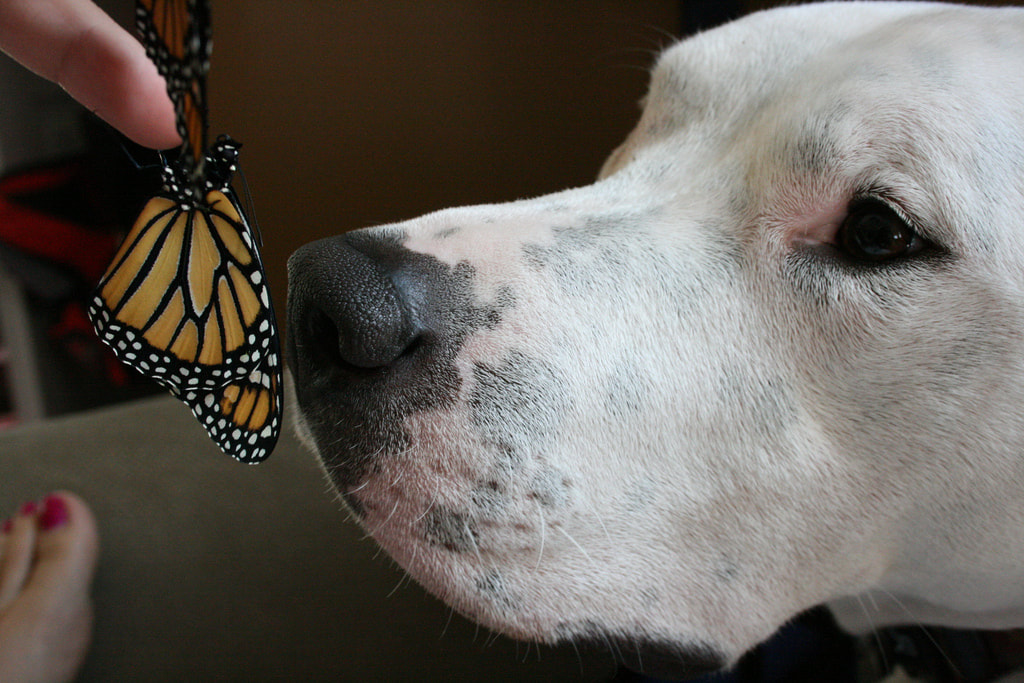 It is no secret to anyone who knows me that I don’t get along with the veterinarian who runs the municipal animal shelter in the city where I work. We come from different worlds and our history is just too rocky for us to recover. She likely doesn’t know it, but I became an animal welfare advocate as a result of a conversation I had with her in the summer of 2006. Her words led me to an epiphany about what happens to healthy and treatable animals in the shelter using our tax dollars. I got mad, I got smart and then I decided to speak out for the animals who cannot speak for themselves. We first met in person on January 22, 2009, after I wrote a letter to the newly elected mayor about no kill philosophies and he asked to meet to talk about the letter. The shelter director was outside the mayor’s office when I arrived for the meeting. She told me that she had read the copy of Nathan Winograd’s book about the no kill movement which I had sent to the mayor (“Redemption: They Myth of Pet Overpopulation and the No Kill Revolution in America") and that it upset her so badly that she almost quit her job. I was tempted at the time to offer to help her pack her things, but I bit my tongue and tried to play well with others. In August of 2009, when the shelter director and I were still on speaking terms (at least to a degree) she asked me to write a white paper about adoption of pit bull type dogs. She said she was having issues with the attitudes of some of her staff related to adopting out these dogs and she needed some help convincing city hall to help her overcome what I understood was a de facto pit bull ban. The city doesn’t have an actual breed ban, but any dog entering the shelter which looked even a little like a pit bull type dog was destroyed. I knew in my heart that she really didn’t care much about using a white paper to change her operation. Looking back, I think it was a way to keep me from being too critical of her operational choices while challenging me to give some proof or evidence that pit bull type dogs were worthy of redemption and should be spared. Because I felt like the paper would be of more use outside of my area than here, I began my research with the plan to make the paper of value to anyone, anywhere. Dog lovers, pit bull type dog advocates, opponents of Breed Discriminatory Legislation (BDL) or Breed Specific Legislation (BSL). I was not qualified to write a white paper. But I work in the legal field and I am familiar with how to do research and compile evidence, so I felt I could do a decent job of putting together something which may be of some value to someone. I finished my first version of “Forsaken No More: Reclaiming the Truth to Save Man’s Best Friend” in September of 2009 and I felt pretty good about it. I had learned a lot in the course of doing my research and I had connected with one of the foremost authorities on my topic, Karen Delise of the National Canine Research Council. I sent copies of my paper to the shelter director and shared it with contacts across the country. The original version was posted to the Animal Law Coalition website and is still there to this day.  In early January of 2014, I was watching a local morning news program and heard the shelter director’s voice. Between the time I had finished my paper and that morning, a lot had happened in my life and in the community. The most relevant thing for the sake of this story is that I had formed a no kill advocacy coalition to take the topic of how our shelter runs to the public in order to get their support to stop the killing of healthy and treatable animals in our shelter. No Kill Huntsville had been rocking the community boat for change for a couple of years by then and people were starting to listen. The news segment was an interview of the shelter director to ask her opinion on the possibility of ours becoming a no kill community (a place where healthy and treatable pets are not destroyed for space). When she began talking about how many problems she was having adopting out pit bull type dogs, I got mad. From what I could deduce, nothing had changed in the way these dogs were handled and there had been no obvious public education programs developed to overcome stereotypes. I decided to channel that anger into a revised version of my research paper. The 2014 version of Forsaken No More is found at this link. Because some of my citation links are no longer valid, the research to which I cite is located here. The topic of how we treat pit bull type dogs in our country and in other countries continues to evolve with each passing month so it is unlikely that I will work to update the paper repeatedly. I stand by the content and I think it is as relevant today as it was when I did my rewrite two years ago. I had my draft reviewed by Karen Delise to seek her input and I am grateful that she took the time to help me again. Whether you are a dog lover, a rescuer, an animal welfare advocate, a public official or just someone who doesn’t like the idea that perfectly good dogs are destroyed using your tax dollars, you are welcome to read my paper and use it in any way which helps you. I am certainly not an authority on this topic. But I think if we are ever to bring an end to the destruction of healthy and treatable animals in places we call shelters, we need to educate ourselves enough to understand why they are being killed with our money and we need to see past the hype which leads to the destruction of dogs which have served us long and well as a culture. Healthy and treatable pit bull type dogs continue to be destroyed in the shelter in the city where I work for space, for convenience and because the public has been bamboozled into believing the hype about these dogs which is not based in fact. I am powerless to do anything to stop that in my shelter or in yours. But perhaps we can save these dogs by making ourselves smarter and then making better choices so that their destruction is not some foregone conclusion. And we can work to fight junk legislation around the globe which spreads like a cancer and which does nothing to keep the public safe. (images courtesy of Melissa Rickman and Joshua Grenell)
There was a time about a decade ago when I considered myself pretty well informed about animal issues simply because I grew up in an animal friendly household and I just like animals. Looking back now, I just didn’t have a clue. Yes, I meant well, but I really was completely out of touch with most of the issues which now take up a lot of space in my head and about which I find myself thinking. A lot.
One of those issues relates to pit bull-type dogs and something called either breed discriminatory legislation (BDL) or breed specific legislation (BSL). I really didn’t have much awareness on this subject until long after the Vick debacle related to his arrest and which led to the 2007 relocation of 47 of the 49 dogs seized from his property (one dog was destroyed early in the process and another was later destroyed for medical reasons). I knew the dogs had been treated in ways most of us simply cannot imagine and they all deserved a second chance. But I really didn’t get into the topic of pit bull-type dogs and legislation issues related to breed until the summer of 2009 when I was asked by my local shelter director to write a “white paper” advocating adoption of “pit bulls” from her shelter. She told me she wanted the paper so she could use it to persuade some of her old guard employees that these dogs were not inherently bad and to convince some folks at city hall that she should not have what then was essentially a de facto ban on these dogs in her building, leading to their destruction. I told her I was not qualified to write a white paper, but that I would be happy to prepare a research paper if it would help her and would save the lives of dogs. I think I knew even the she would never use the paper and so I wrote it to be of use pretty much everywhere, in hopes that someone would get some use out of it. It took me weeks to research and write and when I first shared it in September of 2009, I felt good about it. I had learned things along the way I just did not realize before and developed a great contact in the process through my interaction with Karen Delise, the founder of the National Canine Research Council. The paper got passed around a bit, ended up on the Animal Law Coalition website, and the feedback was generally positive. When I saw my shelter director being interviewed by a local news anchor years later (in late 2012), lamenting the fact that she had so many “pit bulls” she simply had trouble placing, I’ll admit it made me angry. Yes, I just wrote a paper. Yes, it was just research. But had she been genuinely interested in advocating for these dogs and helping to educate those around her on how great they are, all she had to do was read my paper and develop a plan of her own on how to use it. I decided to channel my anger into action and I revised my research paper in February of 2014. Some of the end links no longer work, but I stand by my research all of which is found here. When you put the media hype aside and you take a real look not only at the breeds of dogs we all call “pit bulls,” but at the research regarding factors which cause fatal dog attacks, the reality is that these dogs are no different than any other dogs. All dogs have teeth. All dogs bite. How we treat dogs, objectify dogs, use dogs, whether we spay and neuter dogs and whether we neglect or abuse dogs all play a role in their behavior. I am a huge proponent of breed blind legislation and I firmly believe that all dogs should be treated as individuals. I’m fine with legislation which is focused on public safety, but which is completely silent regarding dog breed. Some dogs really are dangerous. Some dogs are just broken, for lack of a better word, and should not be around people. But to take entire breeds of dogs – or worse yet – perceived breeds of dogs and try to legislate them is not only unconstitutional, but it is entirely ineffective. I was on Facebook today and two items in my news feed stood in stark contrast to each other and served as a reminder that legislating dogs by breed simply does not work and is just wrong.
If you really care about dogs or just about how municipalities spend your money in the name of public safety and through use of police power, please educate yourself about the history of the types of dogs we call “pit bulls” and about the real reasons behind dog aggression. The best way for you to help man's best friend is to be an informed animal lover or animal advocate. If the whole subject is a bit too overwhelming for you and you need a place to start, well, my research paper may just help you. If you've spent any amount of time around dogs, you have probably been bitten. As Karen Delise of the National Canine Research Council put so clearly years ago, "all dogs have teeth. All dogs bite. They bite other animals, they bite each other and they bite humans." This is Dog Bite Prevention Week. It is an annual event promoted by the American Veterinary Medical Association in concert with the US Post Office and the American Academy of Pediatrics. As we mark this week, it is worth taking a few minutes to consider the differences between actual dog attacks and dog bites, almost all of which are entirely preventable. Dog Attacks The reasons for actual dog attacks (as opposed to incidents of simple and avoidable injuries) are often complex, but the answer to preventing dog attacks is relatively simple: humane care and control of dogs is often all that is needed to prevent most dog attacks. The National Canine Research Council's investigations into dog bite-related fatalities reveals the majority of these tragic cases involved circumstances where owners failed to provide necessary care and human control of their dogs: 1) failure by dog owners to spay or neuter dogs not involved in a responsible breeding program; 2) maintaining dogs in semi-isolation on chains or in pens; 3) allowing dogs to run loose; 4) neglecting or abusing dogs; 5) maintaining dogs not as household pets, but as guard dogs, fighting dogs, intimidation dogs, breeding dogs or yard dogs; and 6) allowing children to interact with unfamiliar dogs. Dog Bites The AVMA reports that there is an estimated population of 70 million dogs living in U.S. households. Millions of people - most of them children - are bitten by dogs every year. As much as we love dogs, the reality in our society is that a lot of people don't know much about dog psychology and behavior and even those people who claim to be dog lovers engage in behavior which can lead to dog bites simply by treating dogs too much like people and not enough like the animals they are. Each year, more than 4.5 million people in the U.S. are bitten by dogs. Children are, by far, the most common victims of dogs bites and are far more likely to be severely injured. Senior citizens are the second most common dog bite victims. How do you avoid being bitten by a dog? The Humane Society of the United States provides the following tips: -be polite and respect the dog's personal space. Never approach an unfamiliar dog, especially one who's tied or confined behind a fence or in a car. Don't pet a dog-even your own-without letting him see and sniff you first. -don't disturb a dog while she's sleeping, eating, chewing on a toy or caring for puppies. Be cautious around strange dogs. Always assume that a dog who doesn't know you may see you as an intruder or a threat. -pay attention to the dog's body language. Put a safe amount of space between yourself and a dog if you see the following signals indicating that the dog is uncomfortable and might feel the need to bite: tensed body, stiff tail, pulled back head and/or ears, furrowed brow, eyes rolled so the whites are visible, yawning, flicking tongue, intense stare or backing away. Any of these signs mean the dog is trying to tell you something. For comprehensive coverage about dog body language, I encourage you to take a few minutes to read this information from Labrador Training HQ. It is incredibly detailed and can help you to be truly informed on this subject. Dogs enrich our lives in countless ways. It is well worth the effort to educate ourselves on how to prevent both attacks and bites so that we keep our families safe, avoid tragedies and keep good dogs from being destroyed in our animal shelters due to something we either did - or failed to do - which led to a dog bite. It was Friday when I saw him for the first time. I backed down the driveway into the road, waved goodbye to the boys and there it was. A dog pen. On our neighbor's property. In which sat a yellow lab. In the rain.
We moved to our home only after being driven away from what we thought was our retirement parcel. Our state gives more legal rights to shooting ranges than to property owners and I just couldn't tolerate being forced to listen to automatic weapons fire while inside our home. Leaving was incredibly hard. We chose our new house because it's inside city limits (meaning we do have property owner rights), because it has a few acres and because no one near us had dogs living outside 24/7/365 on a chain or in a pen. So much for that plan. I understand that I live in a region with cultural differences related to domesticated animals. I realize that some people were raised to believe that dogs don't belong inside because they are animals. But hasn't the time come to move past the 1870s? Haven't we learned enough about the intelligence of dogs and their emotional needs to do better for them than to imprison them in pens while denying their nature as pack animals? Because of my job, I know far too well what happens when we force man's best friend to live as a resident dog, separated from our homes and more focused on a 100 square feet of dirt or the world found within the length of a chain than on anything else. I know about fatality attacks by dogs who were not properly socialized to people and who paid for our failings with their lives. The dangers of resident dogs are well documented by people much smarter than me. To me, forcing a dog to live outside chained or penned is abuse and simply abhorrent. If you put your dog in a pen outside for short periods of time in order to get fresh air and because you lack a fully fenced yard, I get that. But to put your dog inside a pen where he or she can only stand up, walk a few feet and turn around makes absolutely no sense to me. To force that dog to live in those conditions perpetually, regardless of weather conditions and with no human interaction beyond providing them food makes even less sense to me. A dog kept chained (or confined to a pen) whether for hours, days, months, or years can suffer tremendous psychological damage. Under these limited conditions, dogs are forced to eat, drink, urinate and defecate all in the same small area. Because of the dog’s minimal physical space and lack of socialization, dogs kept penned or chained can become exceedingly hyper and aggressive. A penned or chained dog is not protective of the people who live in a nearby home. They are protective of and territorial toward the area in which they are confined. Left unsocialized to people on a regular basis, they can become aggressive toward anyone who comes near them, including unsupervised children. The National Canine Research Council's investigations into dog bite-related fatalities reveals the majority of these tragic cases involved circumstances where owners failed to provide necessary care and human control of their dogs: 1) failure by dog owners to spay or neuter dogs not involved in a responsible breeding program; 2) maintaining dogs in semi-isolation on chains or in pens; 3) allowing dogs to run loose; 4) neglecting or abusing dogs; 5) maintaining dogs not as household pets, but as guard dogs, fighting dogs, intimidation dogs, breeding dogs or yard dogs; and 6) allowing children to interact with unfamiliar dogs. My dog will never live outside. We keep him safe and dry. We provide him with the veterinary care he needs, the companionship he needs and he is a member of our family. He is not our child, but we are as responsible for his needs as if he were our child. If yours is a resident dog, why do you even have a dog in the first place? I don't expect an answer to that. It just makes no sense to me at all. And it never will. Your dog deserves better than to be a prisoner in your yard. I once had a shelter director tell me that to a dog, an animal shelter is like a prison. This was years ago. I've thought about her words many times over the years and as I have become more familiar with how most traditional shelters operate as compared to more progressive shelters. When I was contacted by a woman recently who tried to help a stray dog and whose story did not end well., I felt compelled to write something about the difference between a true shelter and an animal holding and disposal facility. In one city, a large dog with no name is seen running across a major roadway and stops near a local business. We'll call him Max. A concerned citizen tries to help Max. She attempts to get him into her car so that she can take him to a local rescue group or get help. Max is fearful, won't get in her car and someone at the business calls animal control. Max is taken to the local “animal shelter” to be held for five days. The citizen calls about Max to inquire about him. She is told that she either has to find Max's owner or find a rescue group to take Max in order to save his life. She tries valiantly to find someone to help and can find no one. She cannot take Max herself because she already has a house full of dogs. As the days pass, Max becomes more stressed. He first tries to bite a kennel worker. A couple of days later he tries to bite a child who put her hand through the kennel fencing. A few days after that, Max lunges at a shelter worker and another dog who are passing by his kennel. And that was it for Max. He was destroyed. Max was not in a shelter. Max was in a holding facility. What no doubt began as confusion for him escalated to fear and anxiety, leading to the point where he was deemed too dangerous to live. In another city, a dog named Forest enters a shelter. He's a unaltered lab/pit bull type mix who charges at the kennel door and shows his teeth. Luckily for Forest, he is in a true shelter, as most of us would interpret that word. Rather than let Forest simply exist in the shelter or deteriorate with time, the staff there work with him. They make time for him. They talk to him, sit outside the kennel door to simply be near him and they work slowly but surely to form a bond. This story has a happy ending. It turns out Forest is a sweet and gentle dog who thinks kissing people is wonderful and who is a perfect candidate for adoption. In writing about Forest's care, the shelter director said this: “If your cat or dog was ever lost and brought to a shelter, became petrified due to a shelter's scary, new environment (like Forest), and was tossed into a caged kennel (like Forest), and was separated from his or her family making it hard to trust the strangers imprisoning him or her (like Forest was), wouldn't you want shelter staff and volunteers to explore every option possible before killing your dog? I like to think we all would want this for our own animals. For this reason, we explore every option available for every animal that comes to us. Forest and so many other animals are safe and alive today because we do what we need to do to get animals past the anxiety of being dropped off in a terrifying building like an animal shelter." It has been said that the manner in which dogs behave in shelters tell us “as much or more about the effect of the shelter as they do about the individual dogs. Shelters are noisy, alien environments, filled with strange smells, unfamiliar people, and dogs they may hear, but not see. In light of all these factors, we should not be surprised that some dogs. . .will behave differently when confined in a shelter, with its barrage of stressors that the dog cannot control, than they will in the safe, secure, predictable environment of a home, cared for by people with whom they are able to form positive attachment.” (National Canine Research Council.) Every dog entering a place we call a shelter should be given the same opportunity for redemption as was Forest. Places which fail to take even a small amount of time to help set dogs up for success should not be called shelters at all. Let's call them holding and disposal facilities so the public they serve is under no illusions about what happens there. I know that some dogs are just broken. They are genuinely dangerous to people and should not be allowed to be adopted out into our communities. But I also know that any dog I have ever loved would be terrified, scared, traumatized and anxious in a traditional shelter environment and would have been destroyed. And for me, that is the biggest tragedy of all. (image courtesy of Terrah Johnson)
|
AuthorI am an animal welfare advocate. My goal is to help people understand some basic issues related to companion animals in America. Awareness leads to education leads to action leads to change. Archives
July 2024
Categories
All
image courtesy of Terrah Johnson
|


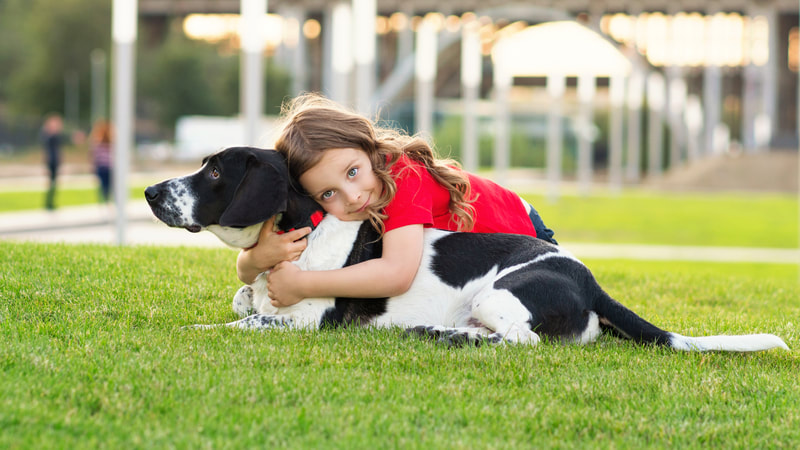
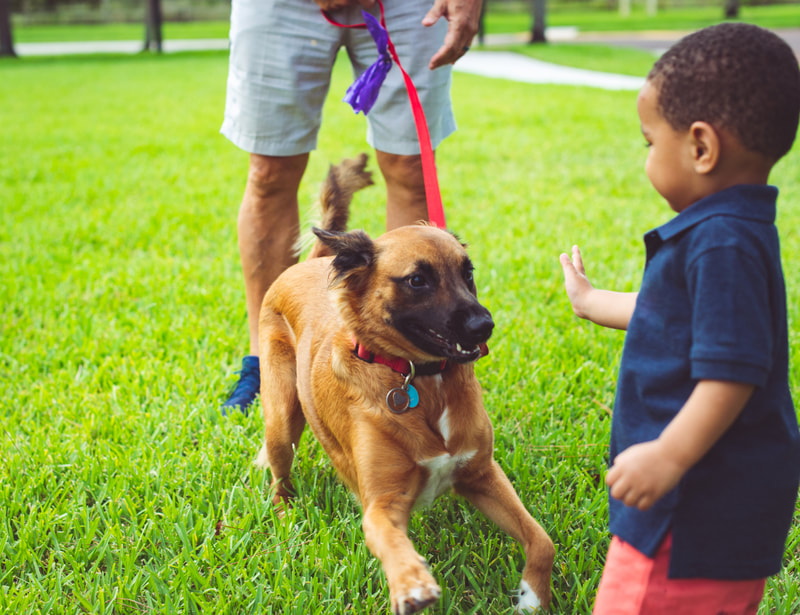
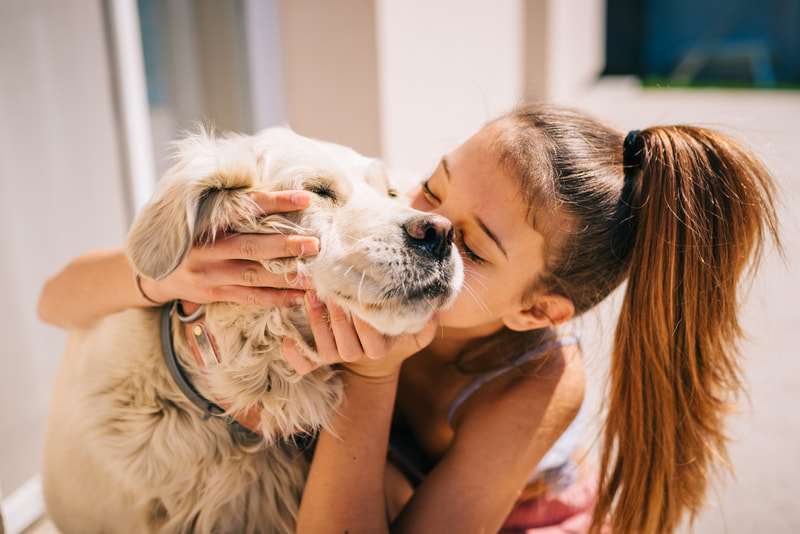

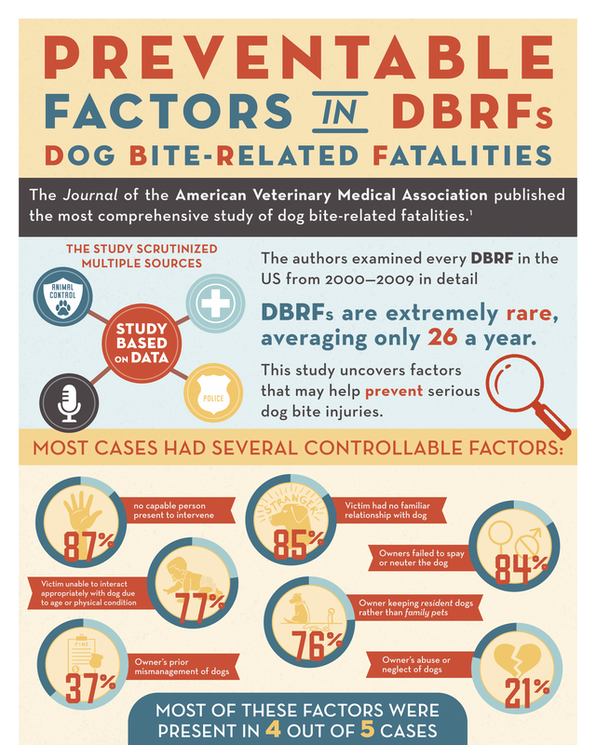






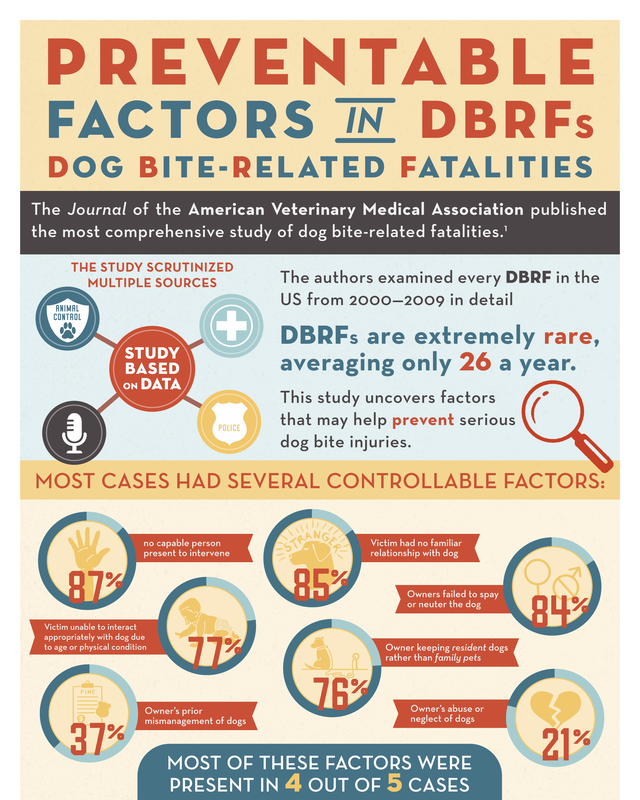


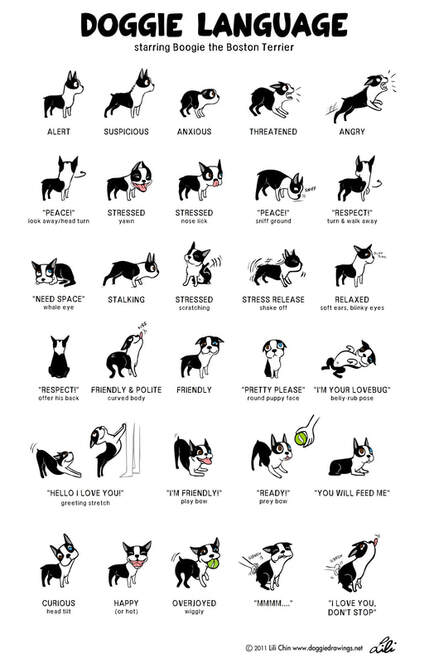
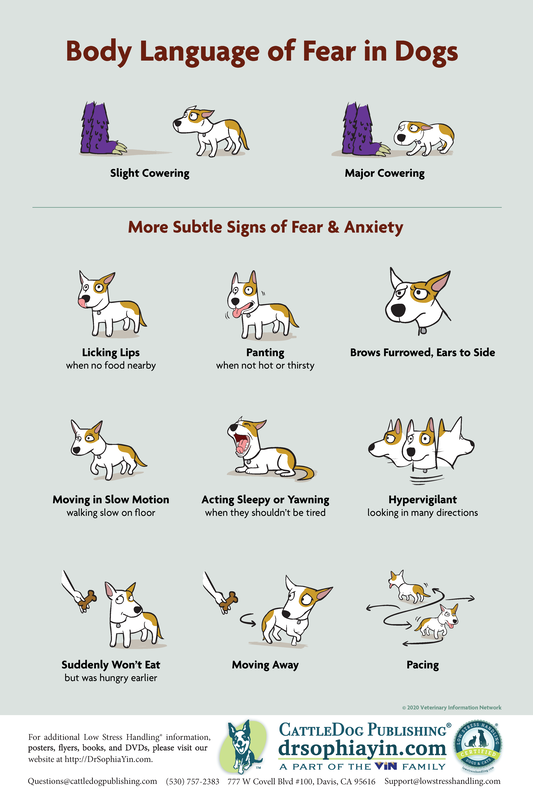

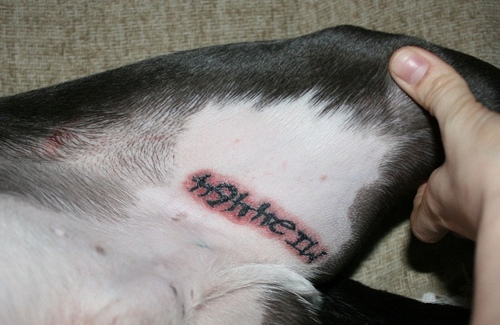
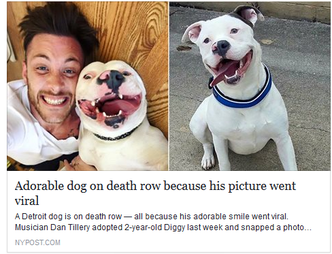
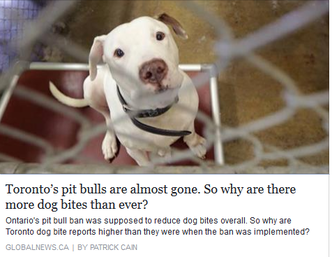


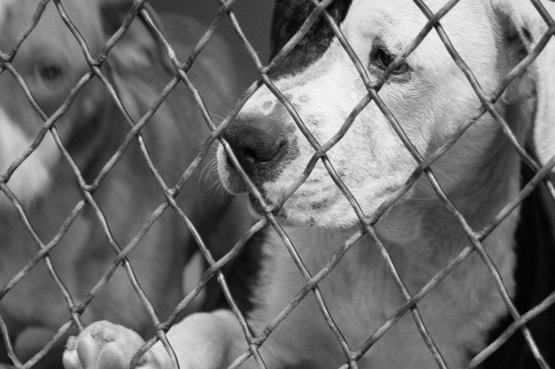
 RSS Feed
RSS Feed